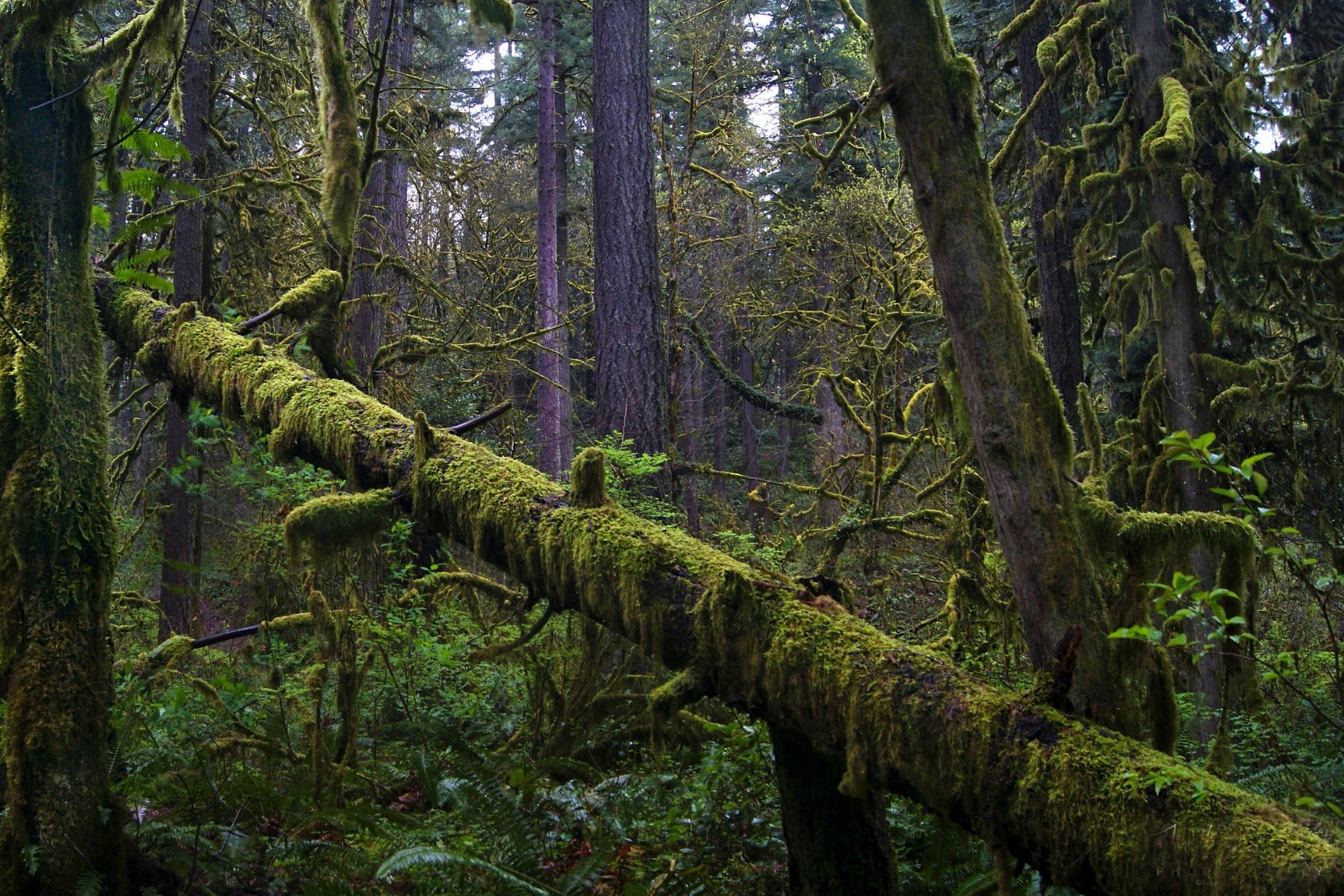What’s Up with the Medford BLM & Old-Growth Logging?
Written by George Sexton
It’s as predictable as the sun rising every morning—the Medford District of the Bureau of Land Management (BLM) will propose several timber sales each and every year and contend that they are retaining (rather than logging) old-growth, and conservation organizations and the BLM’s neighbors will argue that the BLM is in fact logging old-growth. So, who is right and what’s behind the conflicting claims?
Old-Growth Forests are Ecosystems
Old-growth forest providing old trees, multi-layer canopy, standing snags, and down logs.
According to the BLM’s Resource Management Plan, when implementing timber sales the agency is supposed to generally protect old-growth trees over 36” inches in diameter from logging. To their credit, they do a pretty good job of this and most of the largest trees are indeed retained unless they are located in a yarding corridor, a log landing, or in the path of a new logging road. Unfortunately, leaving a few big trees in timber sale units does not mean that old-growth forests are in fact protected from the BLM’s logging agenda.
Old-growth forests that provide habitat for late-successional species such as Northern spotted owls, Pacific fisher and flying squirrels are comprised of four fundamental habitat elements:
Big, old trees!
Multiple canopy layers covering at least 60% of the forest stand.
Standing snags (dead trees).
Large down logs on the forest floor.
And when all four of these habitat elements are present, the stand can be called old-growth, an ancient forest, or late-successional habitat—all of which mean pretty much the same thing. But when the BLM conducts “selection logging,” “gap creation,” or “regeneration harvests” they remove forest canopy cover and layering to such an extent that the few remaining large trees no longer provide old-growth habitat.
The Poor Windy Timber Sale is an Example of Old-Growth Logging
KS Wild’s previous legal fellow, Kelsey, standing with an old-growth Doug fir tree marked for logging in the Poor Windy timber sale.
There just aren’t many people left who still opening advocate for converting the remaining old-growth forests into yet more timber plantations. There exists a widespread agreement between conservation advocates, climate scientists, fire fighters and fire managers, tribes, and communities that old-growth forests are worth more for carbon storage, wildlife habitat, recreation and watershed values than as timber volume. Yet the BLM just can’t get on board with this social consensus. In part this is because the BLM interprets the Oregon and California Land Act (O&C Act) as requiring that it place all other forest values behind the production of timber volume. Another part of it is that the BLM wrote itself a Resource Management Plan in which it directs its timber planners to ignore everything except timber production in the so-called “harvest land base.”
As an example, the Medford district BLM has marked thousands of acres of old-growth forests along I-5 in between the communities of Grants Pass and Glendale for logging in the Poor Windy timber sale. Nearly all of the logging units would remove existing spotted owl Nesting, Roosting and Foraging habitat (old-growth) in order to produce timber volume and create what the BLM creatively refers to as “open seral habitat” (areas largely devoid of trees). While the BLM has marked many of the very largest trees for retention, the idea is nevertheless to turn a functioning late-successional ecosystem into an open condition in which the forest canopy has been removed and the habitat values are lost for at least the next 100 years.
What About Fire?
Climate change is scary and we are bearing the brunt of it in the Klamath-Siskiyous. The summers are too damn hot, the fires are often burning at stand replacing intensity, and lower elevation Douglas-fir stands are simply dying out. The BLM’s old-growth logging program won’t help with any of these challenges. While the BLM does propose admirable small-diameter thinning, prescribed fire treatments and fuels reduction projects, these efforts are generally tied to decisions that also log old-growth forests in the backcountry in order to meet artificial timber production targets. Indeed, in the case of the Late Mungers timber sale, the BLM refuses to do the beneficial fuels work if it cannot also remove the old-growth habitat. If the BLM can’t or won’t join with the rest of us to protect ancient forests and conduct real restoration then perhaps it’s time for them to get out of the public land management business.


